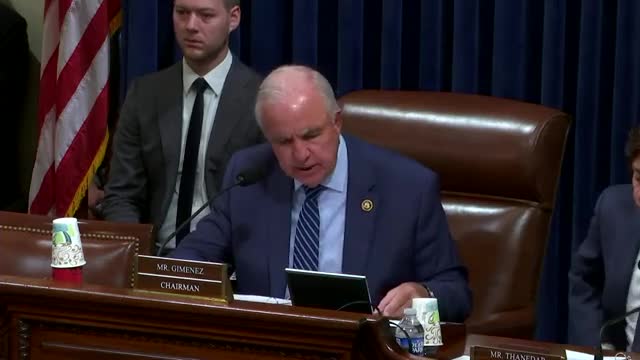TSA proposes new cybersecurity regulations for transportation sector amid rising cyber threats
November 19, 2024 | Homeland Security: House Committee, Standing Committees - House & Senate, Congressional Hearings Compilation
This article was created by AI summarizing key points discussed. AI makes mistakes, so for full details and context, please refer to the video of the full meeting. Please report any errors so we can fix them. Report an error »

In a pivotal meeting held by the U.S. House Committee on Homeland Security, lawmakers gathered to scrutinize the Transportation Security Administration's (TSA) evolving approach to cybersecurity regulations within the transportation sector. As the digital landscape becomes increasingly intertwined with critical infrastructure, the stakes for national security have never been higher.
The session opened with a stark reminder of the vulnerabilities facing transportation systems, which are essential for connecting communities and facilitating commerce. Lawmakers emphasized that cyber threats are no longer just an IT concern; they pose significant risks to public safety and economic stability. The reliance on complex digital systems across various transportation modes—including aviation, rail, and maritime—has made these networks prime targets for cybercriminals and hostile state actors.
Chairman Jimenez highlighted the TSA's role in safeguarding these systems, noting that recent years have seen a shift from voluntary guidelines to more stringent regulatory measures. This transition was catalyzed by the May 2021 ransomware attack on Colonial Pipeline, which disrupted fuel supplies across the Southeastern United States and underscored the urgent need for robust cybersecurity protocols.
However, concerns were raised regarding the TSA's current regulatory framework. Critics argue that the agency's security directives often appear reactive and overly prescriptive, lacking the necessary flexibility for operators to tailor their cybersecurity strategies to specific operational needs. The complexity of the proposed regulations, which span over 300 pages, has raised alarms, particularly for smaller operators who may struggle to comply with such extensive requirements.
Ranking Member Thanedar noted that while the TSA has made strides in engaging with industry stakeholders, the challenge remains to balance regulatory standards with the need for operational adaptability. The recent notice of proposed rulemaking aims to establish mandatory cyber risk management and reporting requirements, but questions linger about whether these measures will effectively mitigate risks or simply impose undue burdens on operators.
As the meeting concluded, lawmakers expressed a shared commitment to fostering a cybersecurity environment that not only protects critical infrastructure but also encourages innovation within the transportation sector. The discussions underscored the importance of collaboration between regulators and industry experts to ensure that cybersecurity measures are both effective and practical.
With the transportation sector at a crossroads, the outcomes of these regulatory discussions will have lasting implications for the safety and resilience of America's critical infrastructure in an increasingly digital world.
The session opened with a stark reminder of the vulnerabilities facing transportation systems, which are essential for connecting communities and facilitating commerce. Lawmakers emphasized that cyber threats are no longer just an IT concern; they pose significant risks to public safety and economic stability. The reliance on complex digital systems across various transportation modes—including aviation, rail, and maritime—has made these networks prime targets for cybercriminals and hostile state actors.
Chairman Jimenez highlighted the TSA's role in safeguarding these systems, noting that recent years have seen a shift from voluntary guidelines to more stringent regulatory measures. This transition was catalyzed by the May 2021 ransomware attack on Colonial Pipeline, which disrupted fuel supplies across the Southeastern United States and underscored the urgent need for robust cybersecurity protocols.
However, concerns were raised regarding the TSA's current regulatory framework. Critics argue that the agency's security directives often appear reactive and overly prescriptive, lacking the necessary flexibility for operators to tailor their cybersecurity strategies to specific operational needs. The complexity of the proposed regulations, which span over 300 pages, has raised alarms, particularly for smaller operators who may struggle to comply with such extensive requirements.
Ranking Member Thanedar noted that while the TSA has made strides in engaging with industry stakeholders, the challenge remains to balance regulatory standards with the need for operational adaptability. The recent notice of proposed rulemaking aims to establish mandatory cyber risk management and reporting requirements, but questions linger about whether these measures will effectively mitigate risks or simply impose undue burdens on operators.
As the meeting concluded, lawmakers expressed a shared commitment to fostering a cybersecurity environment that not only protects critical infrastructure but also encourages innovation within the transportation sector. The discussions underscored the importance of collaboration between regulators and industry experts to ensure that cybersecurity measures are both effective and practical.
With the transportation sector at a crossroads, the outcomes of these regulatory discussions will have lasting implications for the safety and resilience of America's critical infrastructure in an increasingly digital world.
View full meeting
This article is based on a recent meeting—watch the full video and explore the complete transcript for deeper insights into the discussion.
View full meeting